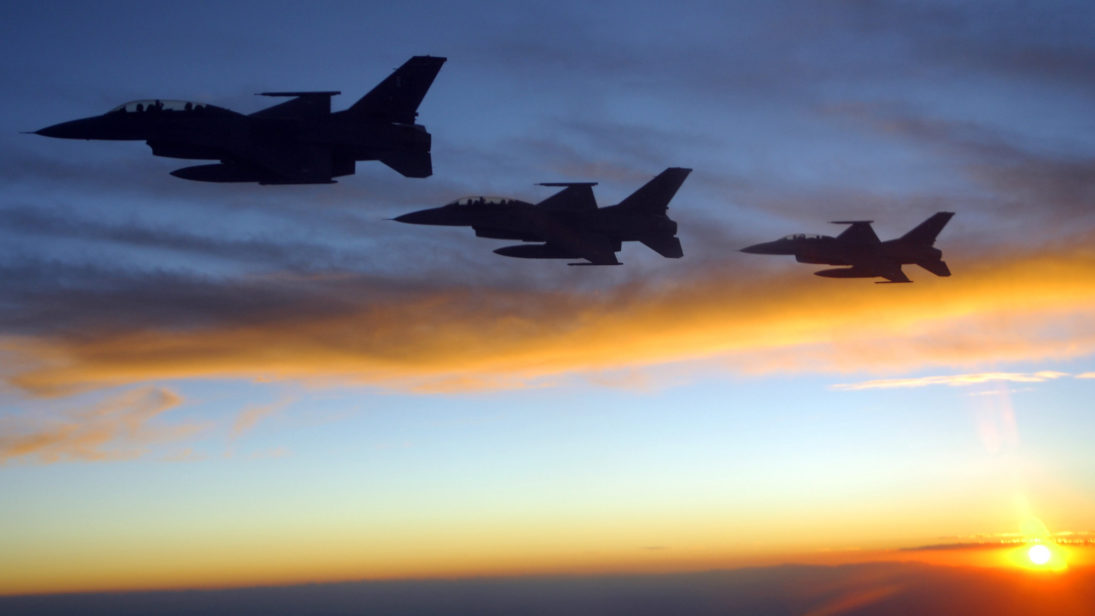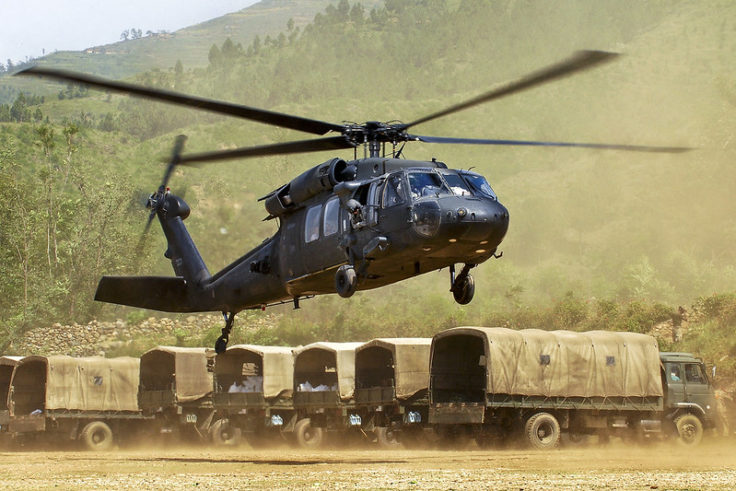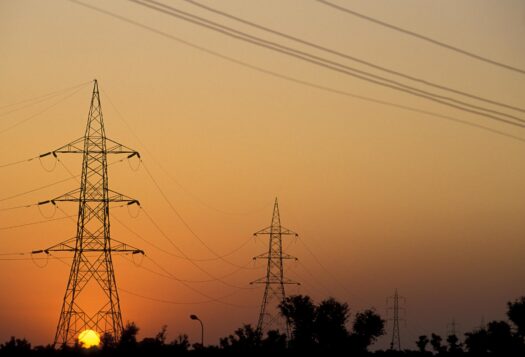
Diplomats and leaders from across the world are currently meeting at the COP26 summit to address climate change and boost monentum for moving towards the goals of the Paris Agreement and the UN Framework Convention on Climate Change. The key of the summit, and climate change debate in general, is to cap and reduce global greenhouse gases (GHG) emissions that are responsible for the consistent increase global temperature. One GHG source, military emissions, makes it crucial to evaluate how countries investing in military buildup are contributing to the deteriorating global climate. Due to the paucity of data about military emissions it is challenging to assess the extent of the military role in exacerbating climate problems globally, however, exponential growth in military budgets and buildup to meet national security threats suggest that military emissions will continue increasing worldwide. Pakistan, which has increased its defense budget by 6.2 percent for FY 2021-22 with an 11 percent increase to the Defence Production Division that supports country’s defense industry, is no exception to this. This makes military emissions important to discuss to make them accountable in global race to zero.
Climate Change & Conflict
The majority of military emissions comes from fossil fuels burnt to run military base operations and equipment. This involves both war and non-war (peacetime) military operations. Beyond this energy consumption by the arms industry and supply chain involving the extraction of raw materials, arms production and procurement, the use of military equipment in operations, and decommissioning and end-of-life disposal (including military waste) are all carbon-intensive activities. Another contribution is of surplus military equipment such as munitions that is generally destroyed by detonation or burning in open pits, thus polluting the air, releasing GHG, and contaminating the land. There is also a paradoxical connection between climate change and military GHG emissions. As climate change becomes more deeply intertwined with conflict—with adverse climate events such as floods, droughts, extreme weather conditions, rising sea levels and others contributing to more conflict risks—states are likely to turn to the military to address this instability. Within the debate of climate change and the role of militaries, Pakistan presents an important case study as a country that is both highly vulnerable to climate change and possesses a military budget making up around twenty percent of the country’s overall expenditures.
Within the debate of climate change and the role of militaries, Pakistan presents an important case study as a country that is both highly vulnerable to climate change and possesses a military budget making up around twenty percent of the country’s overall expenditures.
Pakistan has made significant progress as a result of climate action steps taken over the years under the Sustainable Development Goals (SDGs). Pakistan contributes little (only 0.8 percent of GHG) to global warming, still its carbon emissions are expected to increase by 300 percent by 2030. Moreover, according to the May 2021 “Climate Risk Country Profile” Pakistan is ranked 18 out of 191 for the highest risk-prone countries to climate change. The increase in average temperatures of Pakistan is also predicted to be significantly higher than the global average rise of at least 2.7 degrees Celsius by end of this century—putting Pakistani economy and society at risk.
Pakistan is cognizant of its responsibility to contribute to global efforts to ease the adverse impacts of climate change and this has led to a growing recognition in the country that climate change is a national security issue affecting agriculture, industry, economic development, society, and gender security. Pakistan’s vulnerability to climate change is increasing at a faster rate as compared to national efforts to mitigate its effects. Several projects and targets are in place to address climate change impact. Yet, the progress is sluggish. And, crucially, the relationship between climate change and military activities, is missing from public debate at large.
Adding Military Emissions to the Debate
Pakistan’s full spectrum deterrence doctrine is based on modern conventional and nuclear forces that are maintained through more than forty military bases situated across the country. The operations and maintenance of these bases and force posture contribute to GHG emissions. One of the key contributors is burning of fossil fuel to operate and maintain this deterrence posture. Although the data on fuel requirements of military bases and equipment is not available, the extent of this contribution can be understood by following general estimates—a gallon of diesel generates about 10.2 kg of CO2, an armored truck generates 260 kg of CO2 per mission, and a combat aircraft such as F-35 releases 27,800 kg of CO2 per mission.
Moreover, according to a recent SIPRI report, Pakistan remained one of the biggest arms importers in Asia from 2016-2020 and ranked tenth among arms importers globally with a 2.7 percent share of major arms imports. China, Russia, and Italy are the main exporters to Pakistan. Turkey has also recently stepped in with plans for co-production of military arms with Pakistan. These exporters are committed to cutting emissions under the 2015 Paris Agreement, yet this supply chain is far from carbon free. According to one estimate, shipping and aviation (including civil and military) could be responsible for 40 percent of global GHG emissions by 2050 if left unregulated. This demonstrates that Pakistan’s military is part of the arms supply chain that is based on carbon-intensive activities from manufacturing to shipping to actual use of imported military equipment.

Compared to its arms exporters, Pakistan is a minor contributor of military-induced global GHG emissions. However, the evolving role of Pakistan Navy into custodian of second-strike capability, the modernization of the Karachi Naval Shipyard, the modernization and expansion of the existing naval fleet, the development of the China-Pakistan Economic Corridor (CPEC), and the expanded role of Pakistan Air Force for providing aerial defense and air support to growing naval bases and stations indicate an increased reliance of shipping and aviation. This in turn implies an increase in GHG emissions from these sectors. Moreover, the acquisition of any military equipment comes with a carbon footprint; this includes frigates, eight Hangor class conventional submarines, combat aircrafts, tanks, anti-tank missiles, surface-to-air missiles, Mi-35M helicopters, and other military weapons that Pakistan is acquiring to strengthen its deterrence and enhance its preparedness for conventional war.
Notwithstanding the efforts to reduce military emissions, the magnitude of this issue requires arms producers, sellers, buyers, and operators to demonstrate social responsibility.
One can imply that Pakistan is mindful of its military emissions from steady development of its submarine fleet that will by 2023 comprise of 11 SSKs all fitted with air-independent propulsion (AIP) technology. This technology allows conventional submarines to retain longer endurance, maintain extremely low noise signatures, and is relatively environmental friendly. This includes indigenously constructed PNS Hamza with AIP technology installed in September 2008, PNS Saad and PNS Khalid that were retrofitted with AIP in 2011, and eight submarines that China agreed to build for Pakistan are all powered by AIP. Yet, decarbonization of military activities can’t be swiftly implemented. To give an example, naval vessels and aircrafts, including those of Pakistan, have a long life expectancy, which locks in carbon-intensive technology and delays the possibility of decarbonization. For instance, according to an estimate a ship vessel has a 30-year service life including a major mid-life upgrade or a 20-year service life without an upgrade. Likewise, a JF-17 fighter jet has estimated design life for about 4,000 flights (about 25 years), Mirage aircraft has a design life for 1,500 flight hours but Mirages have been in operation for more than 4,000 flight hours. Flying at high altitude, military aircrafts also release condensation trails (contrails), which emit nitrogen oxide that contributes to climate warming.
Besides aforementioned possible GHG emissions by Pakistan’s military, military waste and surplus is another major contributor. One cannot assess the extent to which military waste is contributing to GHG emissions because of the lack of data in public domain but solid waste (including chemical and hazardous waste) management is a challenge across the country primarily due to lack of national legislation, institutional capacity and a national policy. With regards to surplus military equipment, there is a Disposal Wing in Ministry of Defence Production that takes of surplus military stores.
Looking Ahead
Notwithstanding the efforts to reduce military emissions, the magnitude of this issue requires arms producers, sellers, buyers, and operators to demonstrate social responsibility. Standalone solutions to mitigate climate change impact on military activities and to reduce military’s carbon footprint are critical. To start with, an international effort is required to encourage states to include and report in their national climate change policy the target for reduction in military emissions. COP26 is the platform to initiate this effort. NATO’s recent Climate Change and Security Action Plan that outlines methods to measure GHG emissions from military activities and installations is an encouraging initiative and can be learned from.
Given Pakistan’s impressive record in achieving SDGs to mitigate climate change yet continuing GHG emissions including military emissions and increasing vulnerability to climate change, Pakistan can not only showcase its achievements at the COP26 and beyond but also work to encourage states to start considering military emissions in their debates and national targets. Pakistan can lead in this regard. Additionally, building nationwide climate resilience is a key for which collaborative decision-making, communication, and resource-sharing across various national and international climate change stakeholders will prove important for Pakistan to build and implement. Besides a coordinated national effort, Pakistan should adapt new and emerging technologies to understand climate change and better and adopt global best practices. These steps will not only improve living conditions but also help save future military activities (and next generations as well) from an irreversible climate catastrophe.
***
Click here to read this article in Urdu.
Image 1: Robert Sullivan via Flickr
Image 2: U.S. Army via Flickr


